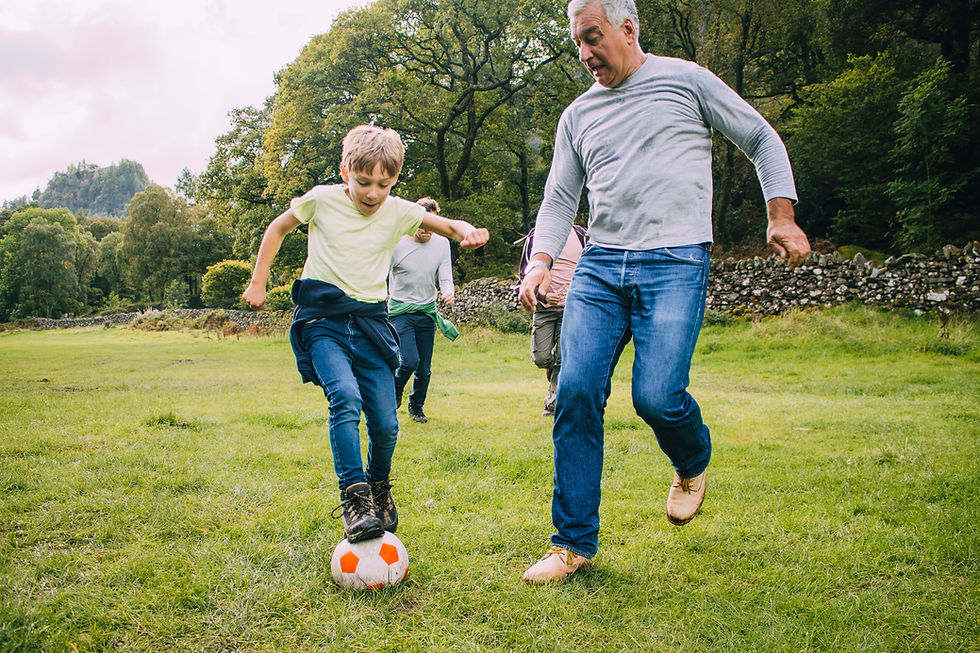Core Strength Beyond Aesthetics: Stabilizing Your Entire Life
- Rock Hudson

- Feb 18
- 3 min read
When most people think “core,” visions of rippling six-packs or beach-ready abs immediately pop into mind. However, the true value of a strong core goes far beyond how you look in a bathing suit. A well-developed core is the linchpin of stability, posture, and functional strength, influencing everything from your lower back health to your performance in everyday tasks. In this blog post, we’ll peel back the layers—literally—on what it means to have a strong core, why it’s essential, and how to train it effectively for a robust, pain-free life.
What Exactly Is the Core?
The “core” isn’t just the rectus abdominis (those front “abs” we see in fitness magazines). It includes multiple muscle groups:
Deep Abdominals (Transversus Abdominis): Wrap around your midsection like a corset, providing internal stability.
Obliques (Internal and External): Help with trunk rotation and lateral flexion.
Pelvic Floor Muscles: Support the bladder, bowel, and internal organs, crucial for foundational stability.
Diaphragm: Plays a key role in breathing mechanics and intra-abdominal pressure.
Together, these muscles form a 360-degree support system for your torso, protecting your spine and enabling free, pain-free movement of your limbs.
Everyday Benefits of a Strong Core
Reduced Lower Back Pain: One of the leading causes of lower back discomfort is a weak core, which forces the spine to bear more load than it’s designed for. Strengthening the deep abdominals and spinal erectors can significantly alleviate this burden.
Improved Posture: A strong core keeps your ribcage stacked over your pelvis, preventing the forward rounding of the shoulders or excessive arch in the lower back. Good posture not only looks more confident but also reduces strain on your neck and upper back.
Better Balance and Coordination: Whether you’re carrying groceries, dancing, or playing sports, core stability ensures your movements are smooth, aligned, and less prone to sudden imbalances or falls.

Core Training Mistakes: The Myth of Endless Crunches
Many people believe that cranking out hundreds of crunches daily is the golden ticket to a strong core. However, crunches alone typically target only the outer abdominal muscles and may neglect deeper stabilizers. Overdoing crunches can also strain the neck and hip flexors while ignoring essential core muscles like the transversus abdominis or pelvic floor.
Exercises That Target True Core Stability
Planks and Side Planks
Plank Variations: Standard forearm plank, high plank, side plank.
Why They Work: These isometric holds force the entire core, including the deep core and shoulders, to stabilize the spine.
Bird-Dogs
How-To: In a tabletop position, extend opposite arm and leg. Maintain a neutral spine and avoid letting the hip tilt.
Benefits: Strengthens lower back, improves balance, and activates deep core stabilizers.
Pallof Press
How-To: Using a resistance band or cable machine positioned to the side, press straight out from your chest, resisting rotational pull.
Why It’s Great: This anti-rotation exercise hits the obliques and transversus abdominis, improving core stability in 3D.
Dead Bugs
How-To: Lie on your back, arms up, knees bent at 90 degrees. Slowly lower one arm and the opposite leg to just above the floor.
Benefits: Teaches you to keep your lower back pressed to the ground, engaging deep core muscles effectively.
Breathing
To truly harness your core’s power, you must master diaphragmatic breathing. When you inhale, your belly should rise as the diaphragm contracts, creating negative pressure. As you exhale, gently contract your abdominal muscles to stabilize the spine. This technique, often used in yoga and Pilates, helps maintain intra-abdominal pressure during heavier lifts and everyday movements like lifting a suitcase.
A study in the Journal of Orthopaedic & Sports Physical Therapy showed that targeted core training significantly reduced lower back pain in a group of office workers over an 8-week program. Another research paper from the European Spine Journal indicated that individuals with chronic back issues who performed core stability exercises saw a notable decrease in pain and an increase in functional mobility compared to those on a general exercise regimen.
Building a Core Routine
Beginner’s Template (2–3 times per week)
Plank: 3 sets, 5 breath hold (build to 60 seconds)
Bird-Dogs: 3 sets of 6–8 reps (per side)
Dead Bugs: 3 sets of 8–10 reps (per side)
Side Planks: 3 sets, 20-second hold each side
Intermediate to Advanced Modifications
Weighted Planks: Add a small plate on your back.
Single-Leg Variations: Perform planks or glute bridges with one leg off the ground to challenge lateral stability.
Anti-Rotation Drills: Pallof Press progressions, cable rotations at various angles, etc.
Core training isn’t just a superficial pursuit of defined abs. It’s the foundation for nearly every movement you perform. From standing upright and walking to picking up your kids or executing a flawless squat, a stable core underpins it all. By focusing on functional exercises, controlled breathing, and consistent practice, you’ll unlock a new level of physical resilience.


Comments